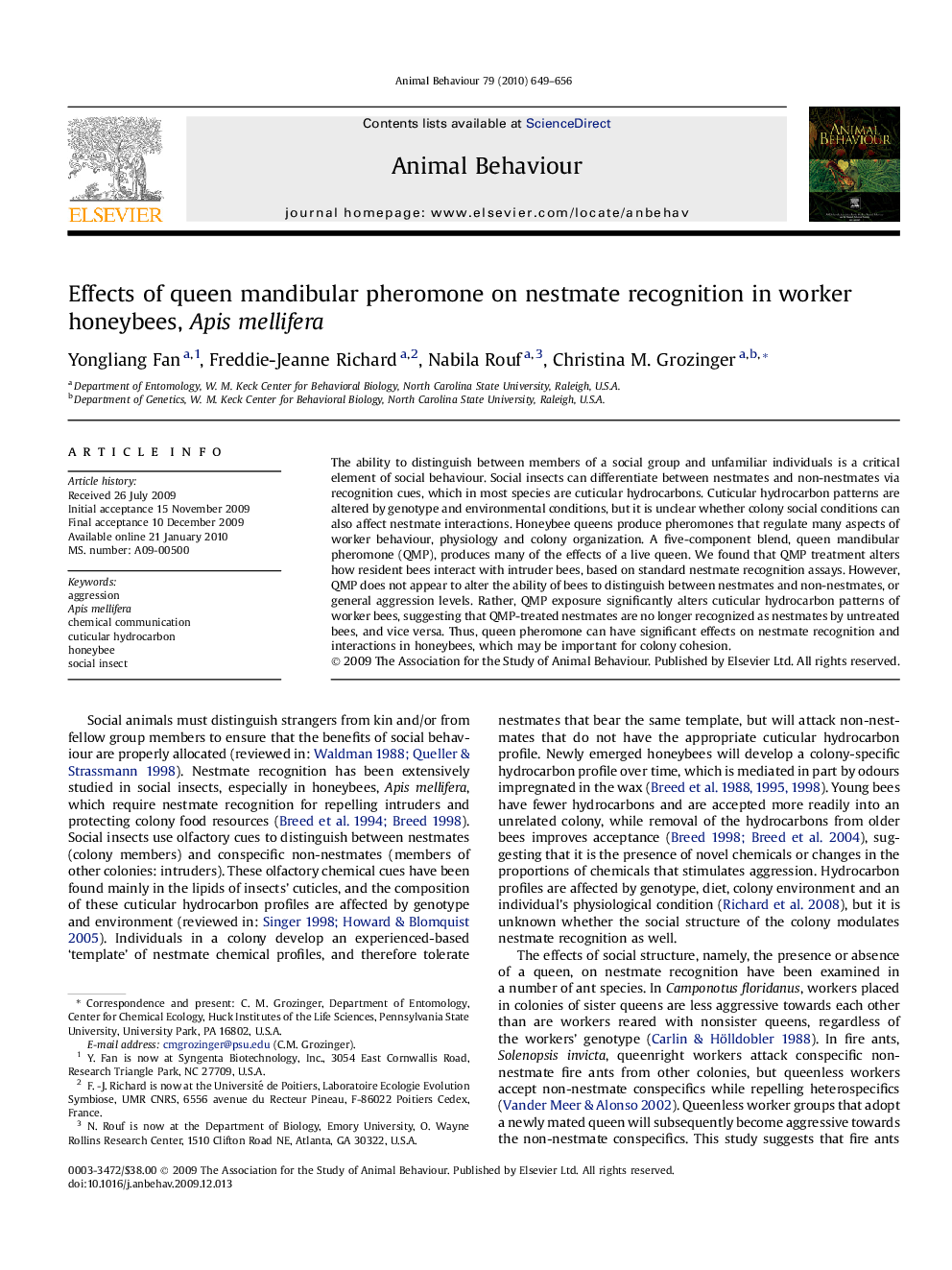| کد مقاله | کد نشریه | سال انتشار | مقاله انگلیسی | نسخه تمام متن |
|---|---|---|---|---|
| 2417395 | 1104318 | 2010 | 8 صفحه PDF | دانلود رایگان |

The ability to distinguish between members of a social group and unfamiliar individuals is a critical element of social behaviour. Social insects can differentiate between nestmates and non-nestmates via recognition cues, which in most species are cuticular hydrocarbons. Cuticular hydrocarbon patterns are altered by genotype and environmental conditions, but it is unclear whether colony social conditions can also affect nestmate interactions. Honeybee queens produce pheromones that regulate many aspects of worker behaviour, physiology and colony organization. A five-component blend, queen mandibular pheromone (QMP), produces many of the effects of a live queen. We found that QMP treatment alters how resident bees interact with intruder bees, based on standard nestmate recognition assays. However, QMP does not appear to alter the ability of bees to distinguish between nestmates and non-nestmates, or general aggression levels. Rather, QMP exposure significantly alters cuticular hydrocarbon patterns of worker bees, suggesting that QMP-treated nestmates are no longer recognized as nestmates by untreated bees, and vice versa. Thus, queen pheromone can have significant effects on nestmate recognition and interactions in honeybees, which may be important for colony cohesion.
Journal: Animal Behaviour - Volume 79, Issue 3, March 2010, Pages 649–656